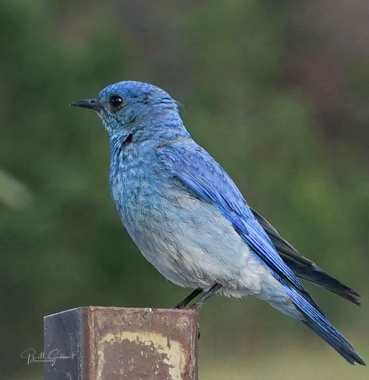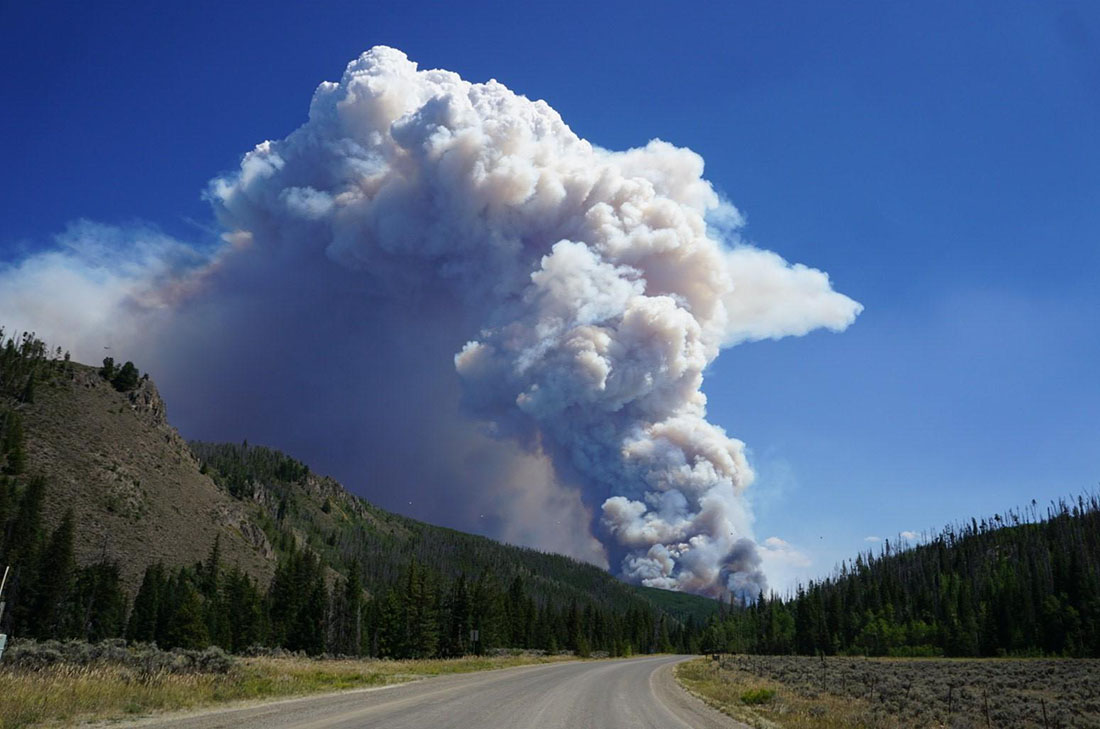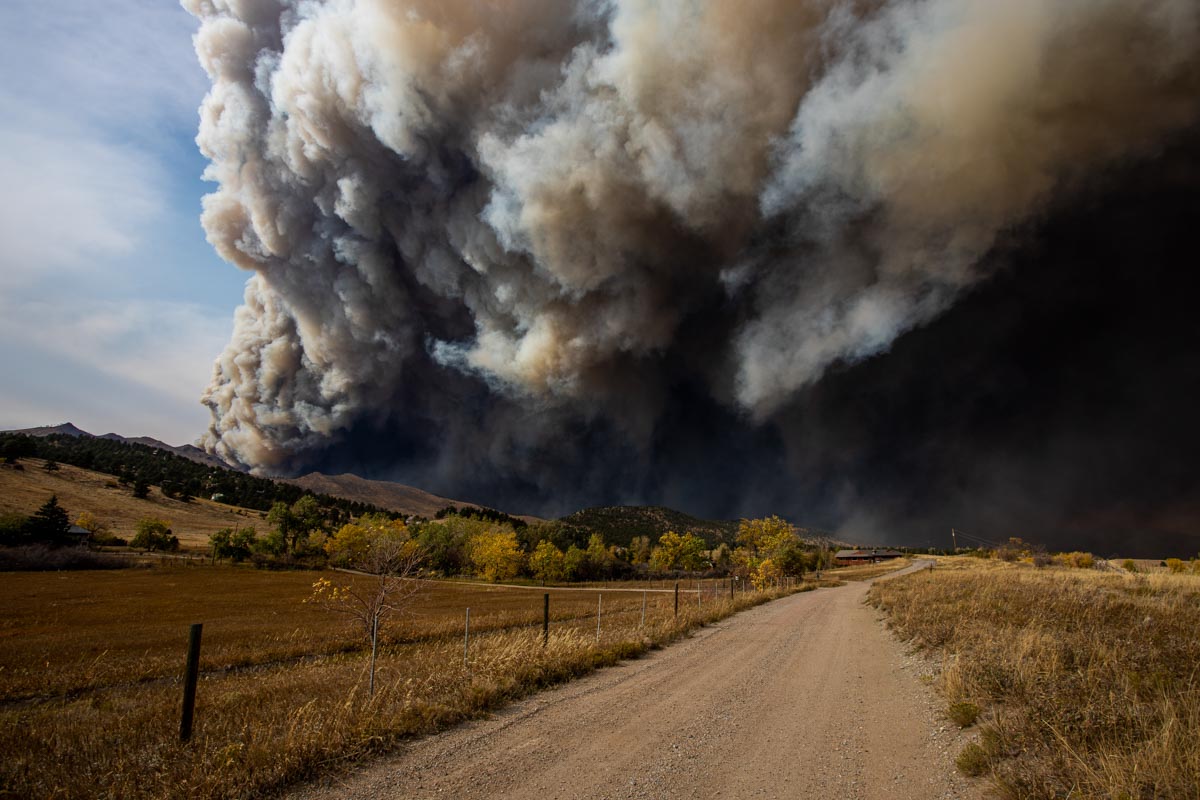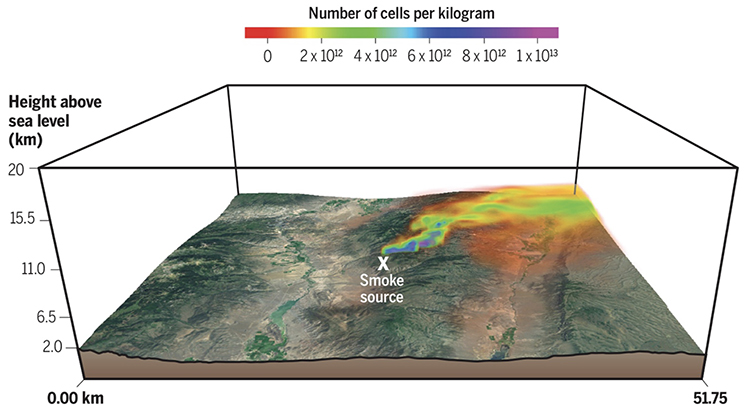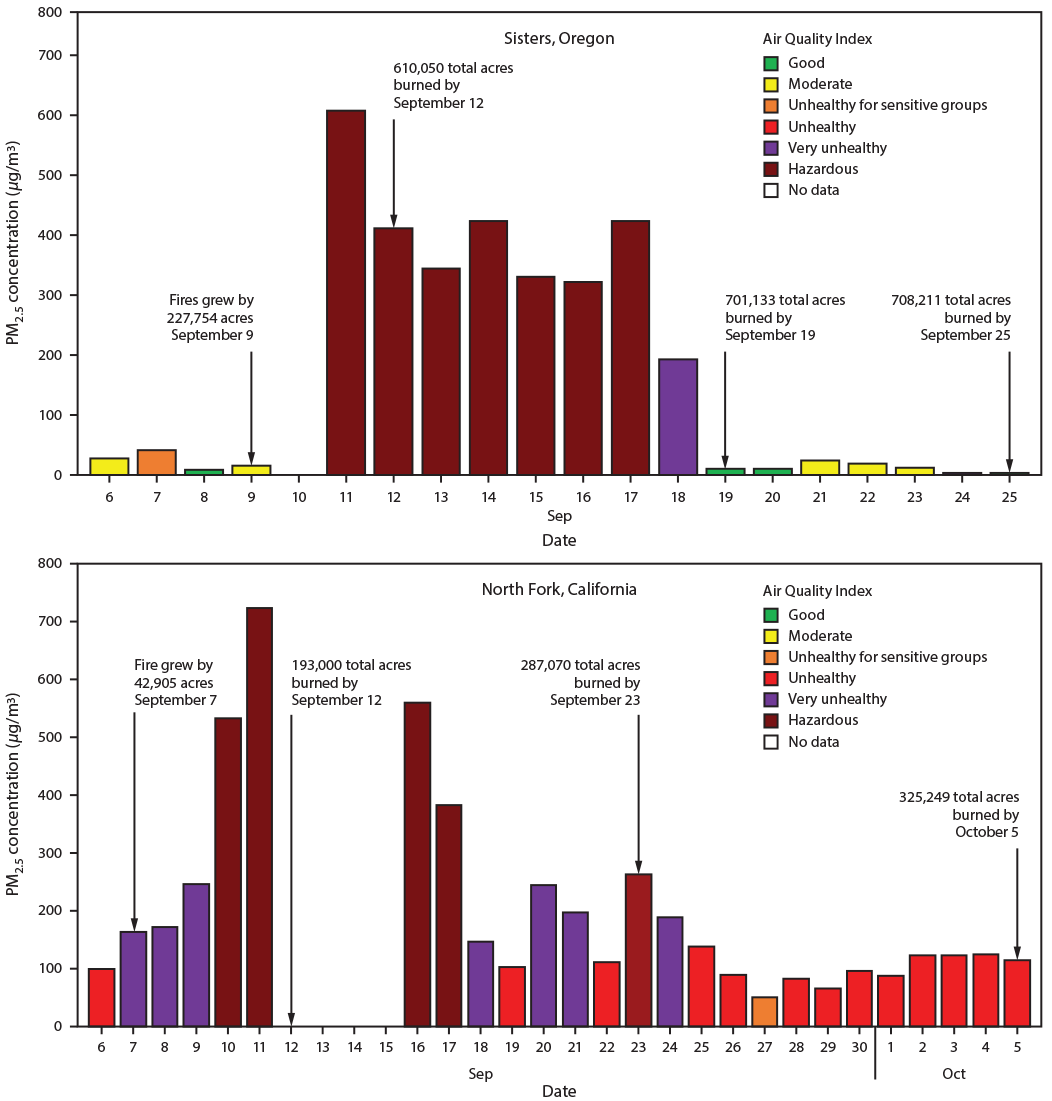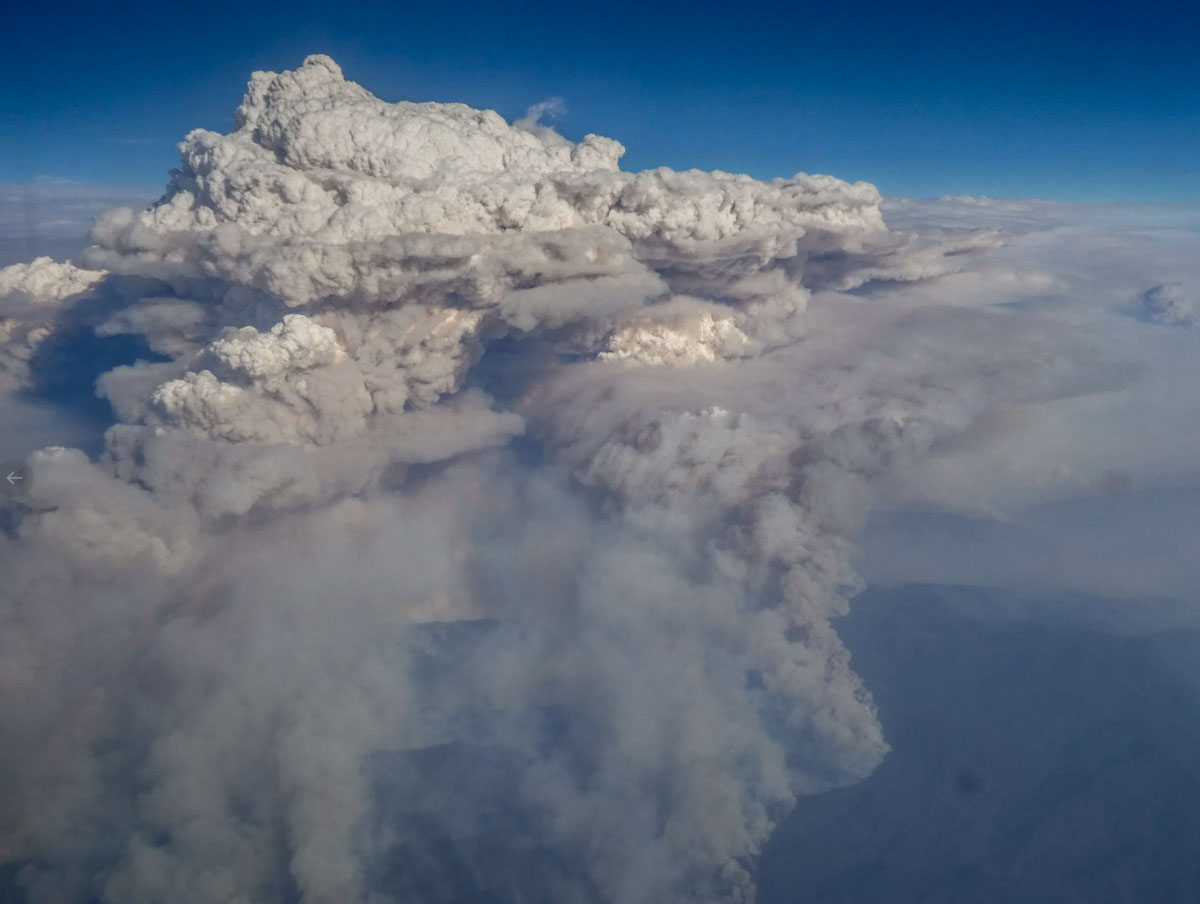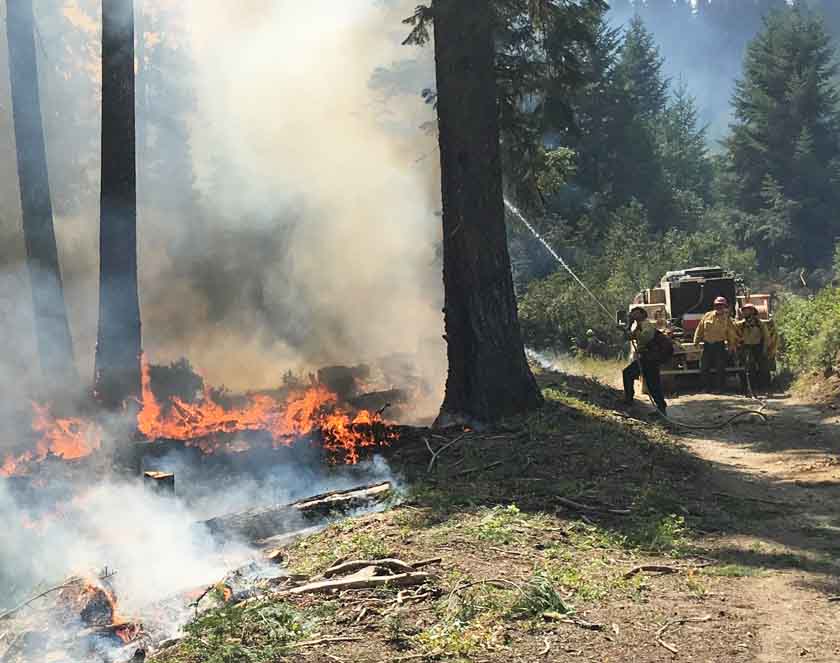
From Bill: I have been communicating for a few weeks with a U.S. Forest Service Forestry Technician about an article they wanted to submit about helping employees who are struggling with mental health issues. The text arrived by email yesterday:
Sorry for the delay. I’ve actually been really busy at work, and then I had an employee resign for mental health reasons today. For that reason I don’t want to put this off anymore.
Here is the article. The author wished to remain anonymous.
It has now been over a year since the start of the 2020 fire season. It has also been just over a year since the COVID-19 pandemic truly began affecting my life, and the lives of the people I work with. A year ago I was onboarding my crew in full COVID PPE, issuing gear and sending them home to telework while we figured out how to fight fire during a pandemic. I was legitimately thrilled to start the 2021 season, thinking the pandemic and the stress was behind us and that finally we could get back to ‘normal’.
But today I had a talk with one of my employees about their incredibly difficult off-season and the mental health struggles they’ve been dealing with. The details of their struggle aren’t critical here. It could be about money, family, a relationship, personal health, or simply happiness and life satisfaction. What is important is that since the end of the 2020 fire season, almost half of the employees I supervise have approached me with mental health concerns just like these. Yes, you read that right. Nearly half of my employees are struggling to cope to the extent that they approached me needing help and advice. And while I was aware, as I’m sure you are, that the pandemic has caused trauma, stress, depression, and self harm at unprecedented levels potentially not seen before, it hadn’t personally affected me until now. And now it’s here, and not in a small way. This is not an anomaly. This is a trend.
At first I had a serious bout of self reflection and introspection. “What have I done to these people that they’re hurting so badly?” “What happened last season to push them in this direction?” “Did I drive them too hard?” “Why didn’t I see this coming?” I consulted with some of my mentors and realized that no, it isn’t necessarily me. It’s us. It’s our culture. We think we can handle just about anything. We regularly and voluntarily place ourselves into environments that define the word stress, and we do so with big dirty grins on our faces. And as the season grinds on we find a few ways to cope, and they’re usually extremely unhealthy. It should not surprise us that this approach is bound to break down. But one thing we don’t do is talk about how we’re feeling. We grind it out because we know winter is coming. And we think that will help. But what if it doesn’t? I’m writing today to say that it doesn’t. Winter unemployment wasn’t a holiday. Fire season was a holiday from reality. And when work ends, the harsh reality of “real life” is waiting there staring you in the face. And now we are returning to work not refreshed and fit and ready to go, but drained from a stressful winter. And if this problem exists where I work, I truly believe it must be happening where you work, whether it’s being talked about or not.
So here’s my advice. I’m not a mental health professional so take it for what it’s worth. I’m just a guy who’s done this for a little while.
Firefighters – know that you are not alone. Literally everyone experiences the same anxiety and struggles just like you do, in different ways and at different times. The past 12 months have been brutal. Everyone on my crew broke their career overtime records in 2020, and did so while it felt like the world was imploding around us, and while we were isolated from friends and family. Stress on top of stress for 6-8 months followed by being set adrift and alone into the world once the snow flies is mentally taxing in a normal year. Doing all of that during a pandemic was bound to push people over the edge. I only ask that you realize that we are here for you. Your supervisors. Your coworkers. Even the random people you meet for one shift on a fire and never see again. We’re here for you because we are you. We experience it too. And while we may not have all the answers, we’re all better off seeking them together. Speak up. Your voice will empower the voices of others. And there are free and anonymous resources to connect you with professionals regardless of which agency you work for. Talking about it will help.
Supervisors – Make yourself available and approachable. I am as guilty as the rest of you. In our line of work, I am a stereotypical fireline supervisor. I am loud and outspoken, and I portray a confidence that I’m sure tells my subordinates that I am more or less bulletproof and immune from these issues personally. That is not helpful. That does not give your people the confidence to speak up. Show humility. Lose the ego. Let them see your weaknesses. Empower your employees with the knowledge they need to get help. Give them contact information for the Employee Assistance Program (EAP). While I am at times a major skeptic when it comes to believing “the agency” has our back, I can say for certain that my agency’s EAP has done incredible work for the people I’ve put in touch with it. And even if no one has approached you for help, you can still foster an environment that encourages open communication and the ability to come to you with issues. The egomaniacal “shut up and dig” approach may work in some cases, but this is not one of them.
Thanks for indulging me in my brief but passionate soapbox rant. I don’t claim to have the answers. I have no formal training in mental health or therapy. But I’ve done this job for a long time, and I’m seeing looks on faces I’ve never seen before. We’ve been getting better recently about talking. Opening up. Discussing as opposed to directing. But I believe we still have work to do if we’re going to create a culture and a family that feels comfortable speaking up and opening up about mental health. Life is stressful enough these days. Doing what we do on top of all of that is bound to be just a little too much sometimes. Drop the ego and be a human. A little empathy goes a long way. Have a safe season.
Note from Bill:
Suicide rates among wildland firefighters have been described as “astronomical.
Help is available for those feeling really depressed or suicidal.
- National Suicide Prevention Lifeline: 800-273-8255. Online Chat.
- Anonymous assistance from the Wildland Firefighter Foundation: 208-336-2996.
- National Wildland Fire and Aviation Critical Incident Stress Management Website.
- Code Green Campaign, a first responder oriented mental health advocacy organization.
- Would you rather communicate with a counselor by text? If you are feeling really depressed or suicidal, a crisis counselor will TEXT with you. The Crisis Text Line runs a free service. Just text: 741-741

